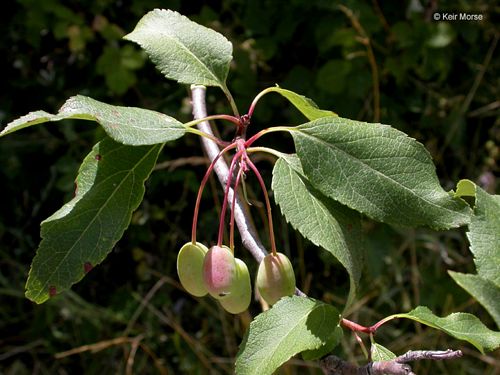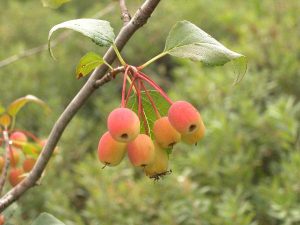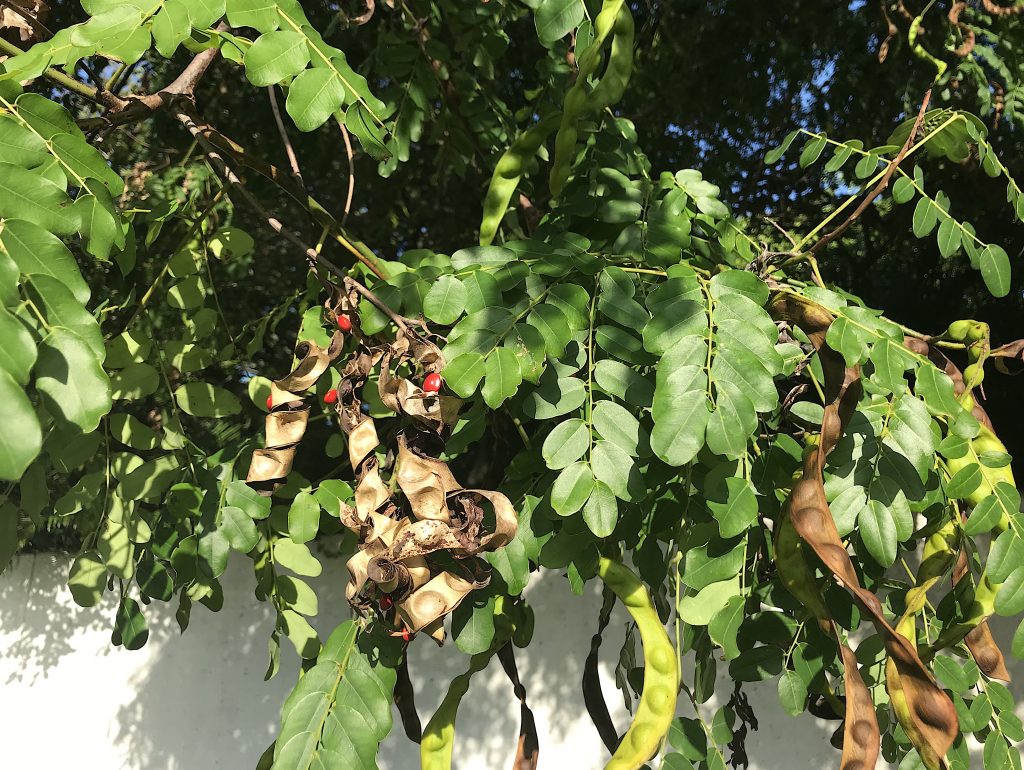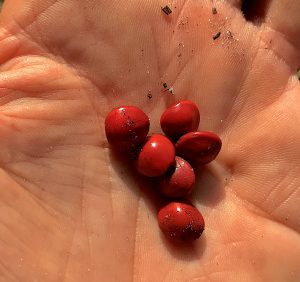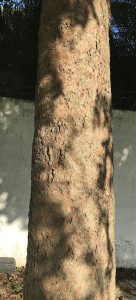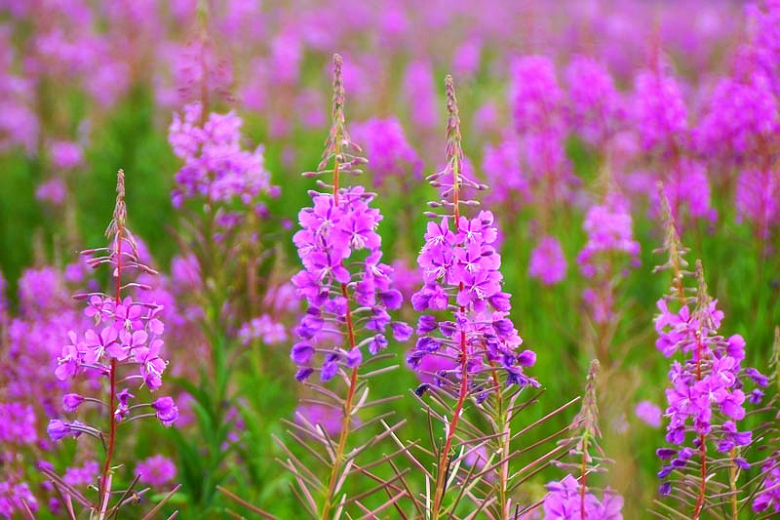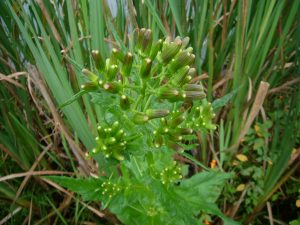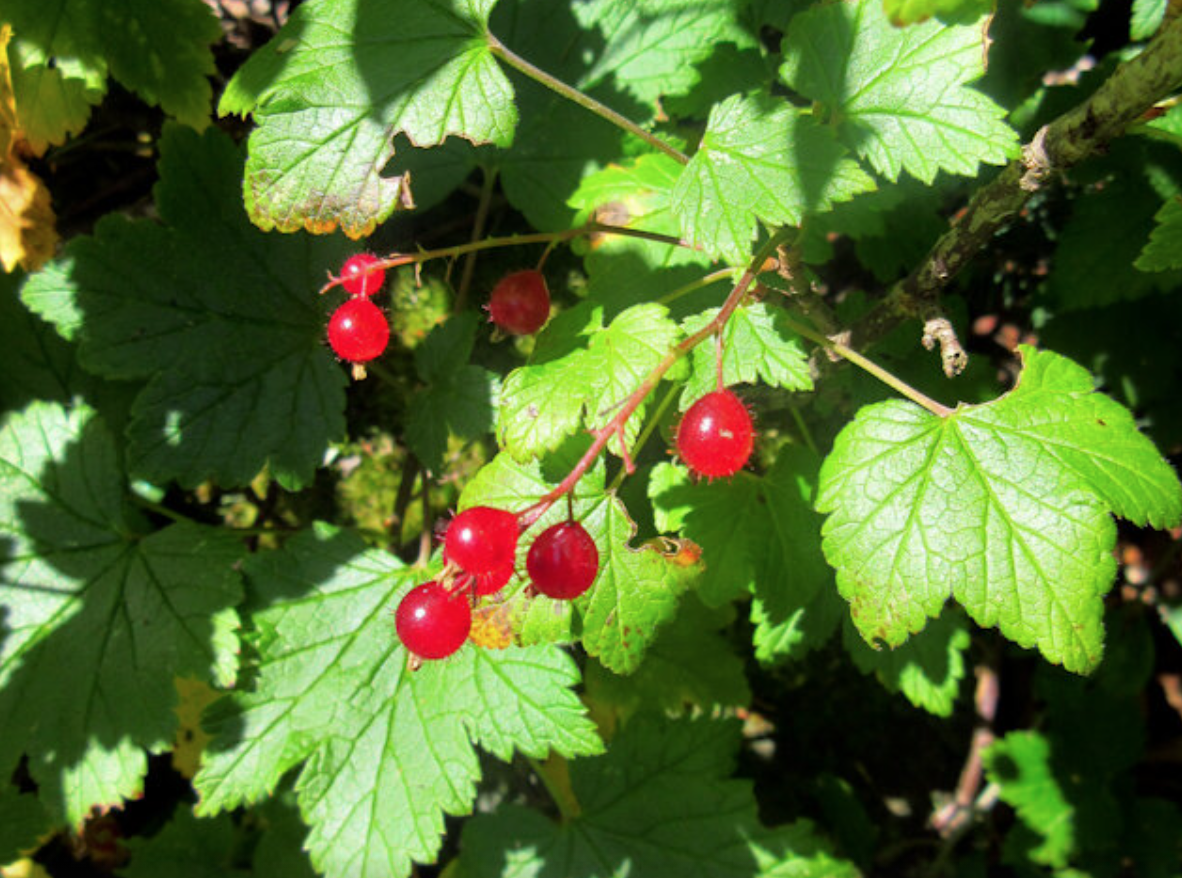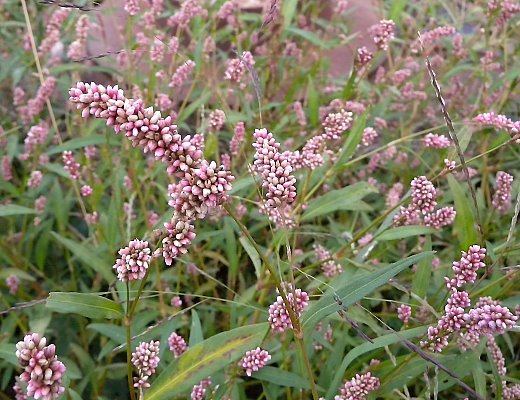
Lady’s Thumbs are closely related to Smartweed.
Where I teach classes in South Carolina — Honea Path — a weed that is prolifically under foot is Lady’s Thumb. Unfortunately the names of it and related species are constantly being changed and shuffled between two genera, Polygonum and Persicaria. This is understandable as the resemblance between the two groups is striking. Sorting out your local species requires attention to detail. Close is good enough as I am not aware of any toxic Persicaria though some may increase light sensitivity. As for edibility, test to determine if the leaf is mild or peppery. The mild ones are eaten as a salad ingredient or pot herb, the spicy ones as a peppery or spicy green.
From Eurasia Lady’s Thumb is among the most prolific of the group and is botanically known as Polygonum persicaria or Persicaria maculosa. Common names include Spotted Lady’s Thumb, Jesuspant, Smartweed, Devil’s Pinches, Virgin Mary’s Pinch, Herbe Traitesse, Red Joint, Red Weed, Red Legs, Redshank and more. As the stems can get red that explains that. The leaves often have a brownish spot in the middle — maculosa (mack-cue-LOW-sah) means stained or spotted — and that gave rise to the “pinches” as the leaf was pinched by the Devil, the Virgin Mary, and a Lady’s thumb. Herbe Traitesse refers to a tale in which a woman murdered her husband and wiped the blood off on the leaf leaving a stain leading to her detection. Some Gaelic-speaking folks called it Blood Spot. Other populations call it Lover’s Pride and Saucy Alice. A few folks were not as high-minded calling it Devil’s Arse-wipe.
Other botanical synonyms include P. maculata, P. ruderalis, P. ruderalis, P. vulgaris, P. dubium, P. fusiforme, P. minus and P. puritanorum. Although Eurasian it was wildly reported in the great lakes region by the mid-1800s. This also might account for why various native people were reported using it in the late 1800s when early botanists were investigating such things. When handling older and or peppery plants make sure to keep your fingers away from your eyes or they will smart hence another name: Smartweed.
Names aside we do have some nutritional information for the Polygonum persicaria aka Persicaria maculosa (percy-CARRY-ah mac-you-LOW-sah). A 100-gram serving of fresh greens has 0.33 mg of B2 (riboflavin) 60 mg of vitamin C, and 12 RE of vitamin A. The same amount of cooked greens has 0.18 mg of B2, nothing else reported. Some names suggest the plant might make a yellow dye so there might be some beta carotene which is the precursor to vitamin A. Also know Lady’s Thumb is on the weed hit list of many states either as a noxious weed or an invasive species. It invades 35 crops in some 50 countries. Not all things are bad, however. This plant provides “persicarin” which might be used in treating severe vascular inflammatory diseases such as sepsis or septic shock. It can also remove more than 60% of nitrite from ground and surface water. The flowers attract bees, wasps, and syrphid flies. Many insects feed on the species including aphids, beetles, weevils, stink bugs, larvae of sawflies, larvae of several moths, copper butterflies and grasshoppers. Most mammals avoid the species at its peppery stage though the white-tail deer will eat young plants and or flowers thus spreading the seeds. Rodents also eat the seeds such as mice, squirrels and chipmunks. Canadian Geese have been seen eating the species as well and three turtles: Snapper, Painted and Slider.
There are several native Persiaria some of which can resemble P. maculpsa among them the Nodding Smartweed (Persicaria lapathifolia) and Pennyslvania Smartweed (P. pensylvania.) They like similar habitats and have similar identifying characteristics. P. maculosa has consistently shorter upright blossoms whereas P. lapathifolia has longer nodding blossoms. P. pensylvanica also has short upright blossoms but those of P. maculosa are usually shorter and more slender. P. lapathifolia and P. pensylvanica occasionally have a dark spot on the upper leaf whereas P. maculosa almost always has a dark spot.
And I saved this for last so not to confuse: Persicaria is from Dead Latin’s “persica” which means peach. Persicaria means leaves that look like peach leaves.
GREEN DEANES ITEMIZED PLANT PROFILE
IDENTIFICATION: A weed to a yard high. Young leaves alternate, are lance-shaped, approximately two to six inches long, just over an inch wide and hairy on the upper surfaces Older leaves are slightly hairy. Leaves taper to a point. Leaves often have a purple/brown spot in the middle of the leaf. Stems are branched, often reddish in color and swollen at the nodes. A thin sheath encircles the main stem at the base of each leaf stem. Flowers are spikes at the ends of stems. Individual blossoms are small and usually pink but can also be white. The shiny seed is a disk to three-sided, brown or black. Tap roots are shallow.
TIME OF YEAR: Warm weather, usually summer. If flowers from about May to October, depending on your climate.
ENVIRONMENT: Lady Thumb prefers moist to wet waste ground, disturbed sites, meadows, stream banks, roadsides and well-watered gardens. It prefers acid loam and does not tolerate alkaline soil.
METHOD OF PREPARATION: Non-peppery leaves in salads or cooked as a pot herb. Peppery leaves used as a spice.

